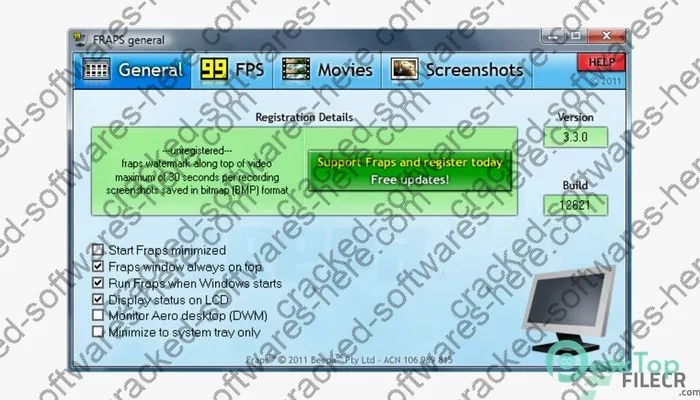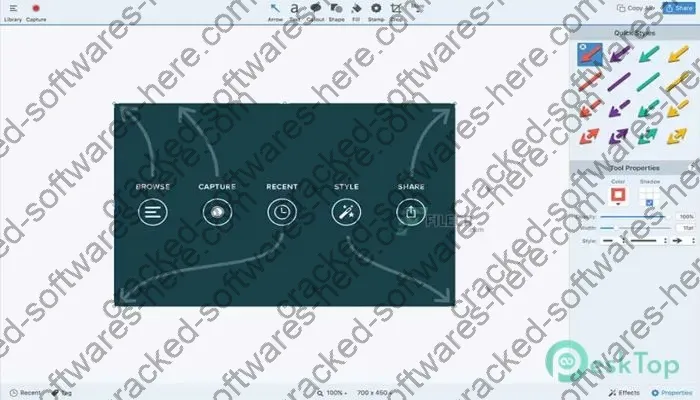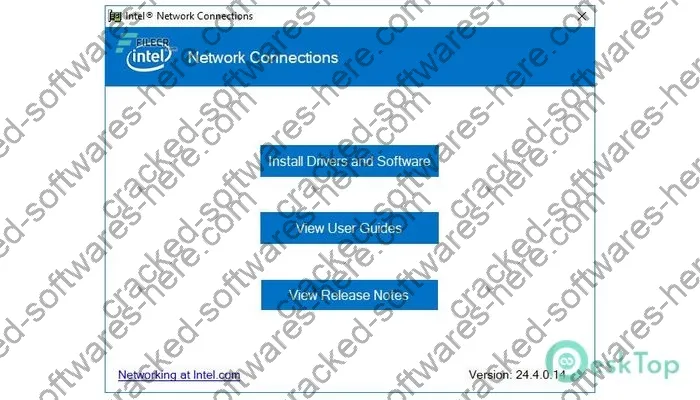Entity Framework (EF) is a powerful object-relational mapping (ORM) framework that allows developers to work with databases using .NET objects. However, managing databases and models can be a time-consuming and complex process, especially as projects grow larger. This is where EF Commander comes into play, providing a comprehensive set of tools to streamline and simplify database operations.
EF Commander Crack is a Visual Studio extension that serves as an all-in-one solution for Entity Framework database management. With its intuitive user interface, developers can easily create, migrate, and update databases, models, and migrations, saving valuable time and increasing productivity.
What is EF Commander?
At its core, EF Commander is a Visual Studio add-in tool designed to enhance the developer experience when working with Entity Framework. It supports all versions of Entity Framework, including EF6 and EF Core, and is compatible with code-first, database-first, and model-first approaches.
EF Commander streamlines tasks such as database creation, migration management, model visualization, and data editing. It provides a centralized platform where developers can perform various database operations without leaving the Visual Studio environment.
Top Features of EF Commander
-
Intuitive UI for Database Management: EF Commander Activation Code offers a user-friendly interface that simplifies the process of managing databases, models, and migrations. With a few clicks, developers can create, update, or delete database objects.
-
Migration Script Generation: Instead of manually writing migration scripts, EF Commander allows you to generate migration commands automatically, saving time and reducing the risk of errors.
-
Built-in SQL Editor and Query Tool: The integrated SQL editor and query tool enable developers to execute SQL queries directly against their databases, making it easier to troubleshoot and analyze data.
-
Model Visualization and Diagramming: EF Commander provides a visual representation of your models, making it easier to understand and navigate the relationships between entities.
-
Entity Data Viewer and Editor: With the entity data viewer and editor, developers can easily view and edit data directly within the Visual Studio environment, streamlining the testing and debugging process.
See also:
Getting Started with EF Commander
Getting started with EF Commander License Key is a straightforward process. First, you need to install the extension in Visual Studio from our site. Once installed, you can connect EF Commander to your existing databases or create new models from scratch.
One of the standout features of EF Commander is its ability to reverse engineer an existing database into an Entity Framework model. This process involves analyzing the database schema and generating the corresponding model classes and mappings automatically.
Example Workflow:
- Install the EF Commander extension in Visual Studio.
- Connect to your database server (SQL Server, Oracle, MySQL, etc.).
- Right-click on the desired database and select “Reverse Engineer Code First.”
- Configure the reverse engineering options (namespace, context name, etc.).
- EF Commander will generate the model classes and mappings for you.
With the generated model, you can immediately start working with your database using Entity Framework, saving time and effort compared to manually creating the model and mappings.
Using EF Commander for Database Migrations
Database migrations are a crucial aspect of working with Entity Framework, especially in team environments or when deploying changes to production. EF Commander simplifies the migration process by providing a streamlined workflow for creating, applying, and managing migrations.
Step-by-Step Guide to Creating and Applying Migrations:
-
Create a new migration: In EF Commander, right-click on your project and select “Add Code First Migration.” Provide a descriptive name for the migration.
-
Review the migration script: EF Commander Crack generates the migration script automatically, which you can review and modify if needed.
-
Apply the migration: Once you’re satisfied with the migration script, you can apply the migration to your database by right-clicking on the migration and selecting “Apply Migration.”
-
Track migration changes: EF Commander keeps track of applied migrations, making it easy to roll back or update migrations as needed.
Tip: In team environments, it’s recommended to use EF Commander’s migration script generation feature to ensure consistency across team members. Simply generate the migration script, commit it to your source control system, and have team members apply the migration using the script.
Updating Your Model from the Database
As your database evolves, it’s essential to keep your Entity Framework model in sync with the database schema changes. EF Commander provides tools to update your model from the database, ensuring that your code accurately reflects the database structure.
Updating the Model from the Database:
- Right-click on your project in EF Commander and select “Update Model from Database.”
- Choose the database objects you want to include or exclude from the update process.
- Configure the update options, such as whether to overwrite existing classes or create new ones.
- Review the proposed changes and apply them to your model.
EF Commander also offers options for handling conflicts between the model and the database schema. You can choose to update the model, update the database, or create a migration script to address the differences.
Additional EF Commander Capabilities
While database management and migration handling are core features of EF Commander, the tool offers several additional capabilities to enhance your Entity Framework development experience:
-
Model Visualization and Editing Entities: EF Commander provides a visual representation of your model, allowing you to easily navigate and edit entity classes, properties, and relationships.
-
Built-in SQL Editor and Query Execution: The integrated SQL editor enables you to write and execute SQL queries against your databases directly from within Visual Studio, streamlining debugging and data analysis processes.
-
Seed Data Population: EF Commander Patch simplifies the process of populating your databases with seed data, which can be useful for testing or initial data seeding scenarios.
-
Comparing and Updating Models: With EF Commander, you can compare your model against the database schema and update the model to reflect any changes, ensuring your code stays in sync with the database structure.
See also:
EF Commander vs. Other Entity Framework Tools
While EF Commander is a powerful tool for Entity Framework database management, it’s not the only option available. Other popular tools include EF Core Power Tools and Entity Framework Core Tools.
Advantages of EF Commander:
- Comprehensive feature set covering database creation, migration management, model visualization, and more.
- Intuitive user interface designed for ease of use.
- Supports all versions of Entity Framework (EF6 and EF Core).
- Robust migration script generation and management capabilities.
Disadvantages of EF Commander:
- Requires a paid license for commercial use (free for personal and open-source projects).
- Limited integration with other Visual Studio extensions or tools.
Ultimately, the choice between EF Commander and other tools comes down to your specific project requirements, team preferences, and budget. While EF Commander offers a comprehensive solution, other tools may be better suited for certain scenarios or integrate better with your existing development workflow.
Best Practices with EF Commander
To get the most out of EF Commander and ensure a smooth development experience, it’s essential to follow best practices. Here are some recommendations:
-
Set Up Naming Conventions: Establish consistent naming conventions for your models, entities, and properties. EF Commander allows you to configure these conventions, making it easier to maintain a consistent codebase.
-
Keep Models Updated with Database Changes: Regularly update your models to reflect any changes made to the database schema. EF Commander’s “Update Model from Database” feature simplifies this process.
-
Use Transactions for Data Integrity: When making changes to your database, use transactions to ensure data integrity and maintain a consistent state in case of errors or exceptions.
-
Implement Validations: EF Commander supports data annotations and fluent API validations. Implement appropriate validations to ensure data consistency and integrity.
-
Leverage Model Visualization: Take advantage of EF Commander’s model visualization capabilities to better understand and navigate your model, especially in larger or more complex projects.
-
Utilize the SQL Editor: The built-in SQL editor can be a valuable tool for debugging, analyzing data, and executing ad-hoc queries against your databases.
By following these best practices, you can enhance the efficiency and maintainability of your Entity Framework projects while leveraging the full potential of EF Commander Crack.





If you’re considering this software, read the detailed analysis on:
https://software-cracks-here.org/prepros-serial-key-7-22-0-full-free-activated/
Be sure to check out the in-depth review of this top-rated app right here:
https://hackpc.net/2024/05/21/driver-talent-free-crack-8-1-11-44-free-download/
Prior to purchasing this powerful application, read our comprehensive writeup here:
https://best-crackedsoft.com/backupassist-desktop-crack-10-5-0r1-free-download/
Get the full story about this top-rated app via our writeup at this URL:
https://cracksoftmarket.org/2024/01/foxit-reader-crack-2024-3-0-23028-full-free-download/
Get the full story about this top-rated program via the analysis on this URL:
https://cracksoftforfree.com/stardock-fences-crack-5-04-free-download/
This no-holds-barred review on this software is available at this link:
https://crackedsofthere.org/2024/02/streamfab-youtube-downloader-pro-keygen-6-1-6-0-free-download/
Don’t miss the in-depth review for this top-rated app at this link:
https://softforyou.net/eset-nod32-antivirus-crack-14-0-22-0-free-download/
This brutally honest analysis of this powerful program is posted at this link:
https://software-cracks-here.net/topaz-photo-ai-activation-key-3-0-1-free-download/
You won’t want to miss the in-depth review on this app at this link:
https://pchacks.net/2024/03/30/rcysoft-pdf-watermark-pro-keygen-13-8-0-0-free-download/
Get the scoop on this app via the writeup over at this URL:
https://softforyou.net/digitalvolcano-duplicate-cleaner-pro-keygen-5-21-2-free-download/
Check out the in-depth review of this incredible application at the website:
https://365soft-free.com/2024/04/16/fonepaw-android-data-recovery-crack-6-1-free-download/
If you’re considering this cutting-edge application, take a look at this detailed writeup here:
https://cracksoftshere.net/2024/04/expressvpn-keygen-12-66-24-free-download/
Check out the detailed review of this fantastic application at the link:
https://found-cracked-here.org/daemon-tools-lite-activation-key12-0-0-2126-free-download/
If you’re considering this powerful program, take a look at the detailed writeup at this link:
https://softfinder.org/eset-nod32-antivirus-activation-key-v17-0-16-0-full-free/
Get all the details for this software via our writeup on this website:
https://soft-store-here.org/uranium-backup-professional-activation-key-9-8-3-7412-full-free/
Our tell-all review for this feature-packed application is available over at:
https://crackedsoftmarket.org/2024/05/2brightsparks-syncbackpro-crack-11-3-16-free-download/
Read the detailed analysis on this amazing software over at the link:
https://software-cracked.com/xara-designer-pro-crack-23-7-0-68699-full-free/
Get all the details on this amazing software via our writeup over at this URL:
https://cracksofthere.com/2024/03/disk-pulse-serial-key-15-9-16-free-download/
The no-holds-barred writeup for this feature-packed program is posted over at:
https://best-hackedsoft.org/pidkey-lite-serial-key-1-64-4-b36-full-free-activated/
Check out the in-depth writeup on this fantastic software at the website:
https://crackingsofts.org/cockos-reaper-crack-7-14-free-download/
Our no-holds-barred review on this powerful application can be found over at:
https://cracks-software-here.net/2024/04/12/balsamiq-wireframes-crack-3-5-17-free-download/
Don’t miss the review of this app over at:
https://crackedsoftmarket.org/2024/03/kotato-all-video-downloader-pro-activation-key-9-2-8-full-free/
You won’t want to miss this analysis of this stellar program at this link:
https://crackedsofthere.net/2024/03/30/exif-pilot-keygen-6-22-free-full-activated/
Get all the details for this app in the review at this website:
https://cracksoftmarket.org/2024/04/gilisoft-screen-recorder-pro-keygen-13-0-free-download/
Take a look at the in-depth writeup on this incredible program on the URL:
https://software-cracked.com/abelssoft-undeleter-activation-key-free-download/
Don’t miss the in-depth writeup for this top-rated software over at:
https://softhacks.net/httpmaster-pro-keygen-v5-8-2-full-free/
The no-holds-barred writeup for this program is posted at this link:
https://softwares-cracked.org/letimix-gainmatch-crack-1-42b230930-free-download/
Get all the details on this app in our writeup at the link:
https://getfreesofts.org/gillmeister-automatic-email-processor-ultimate-keygen-free-download/
Get the full story on this software in the review on this URL:
https://found-cracked-here.net/sapien-primalscript-2022-serial-key-v8-0-173-free-download/
Get the scoop on this top-rated program in the review at this website:
https://getcracksoftwares.org/4k-video-downloader-crack-4-31-0-91-free-download/
Our no-holds-barred writeup on this feature-packed application is posted right here:
https://cracknews.net/2024/05/goversoft-privazer-crack-4-0-84-free-download/
Before you buy this cutting-edge application, check out our in-depth review on:
https://best-crackedsoftware.org/voicemod-pro-activation-key-2-6-0-7-free-download/
Get the scoop on this amazing program in our review at this website:
https://found-cracked-here.org/aomei-fone-tool-technician-keygen-2-5-0-free-download/
Get the full story on this amazing app in the writeup over at this URL:
https://cracksoftbest.net/ratiborus-kms-tools-2024-portable-keygen-05-03-2024-free-download/
Get the full story on this app from our review on this URL:
https://best-crackedsoftwares.org/affinity-photo-crack-2-4-0-2301-free-download/
Get the scoop about this software via our review over at the link:
https://best-crackedsoftware.org/foxit-reader-crack-2024-2-1-25153-free-download/
Our tell-all analysis of this software can be found at this link:
https://cracks-software-here.com/2024/04/13/iso-workshop-pro-keygen-12-6-free-download/
Take a look at the in-depth review on this amazing application at the link:
https://software-cracked.com/xara-designer-pro-crack-23-7-0-68699-full-free/
Be sure to check out this analysis on this app over at:
https://getcracksoftwares.net/cypheros-ts-doctor-crack-4-0-40-free-download/
Before you buy this cutting-edge program, take a look at this comprehensive writeup at this link:
https://softhacks.net/classroom-spy-professional-serial-key-5-2-1-full-free-activated/
Be sure to check out this analysis for this program right here:
https://softwares-cracked.org/internet-download-manager-crack-6-42-9-free-download/
Get the full story on this top-rated app via the analysis at the link:
https://cracked-soft-here.org/scanscore-professional-serial-key-3-0-8-free-download/
The tell-all writeup of this software is posted at this link:
https://bestsoftreview.com/2024/02/itoolab-watsgo-serial-key-8-4-0-full-free-key/
Our tell-all writeup for this software is posted at this link:
https://softwares-cracked.org/im-magic-partition-resizer-keygen-7-0-0-unlimited-full-free/
Check out the full analysis for this fantastic program on the URL:
https://best-cracksoft.com/daum-potplayer-activation-key-1-7-22036-free-full-activated/
Don’t miss the writeup for this top-rated app over at:
https://cracked-softwares.net/joyoshare-vidikit-serial-key-2-2-0-50-free-full-activated/
Get all the details for this program in our analysis on the link:
https://software-cracked.com/coolmuster-pdf-merger-activation-key-2-3-16-activated-latest/
This tell-all analysis for this powerful program is available right here:
https://cracksoftbest.org/n-track-studio-suite-crack-9-1-8-6848-free-download/
Get the full story for this top-rated program via the analysis at this website:
https://hackinform.com/ashampoo-backup-pro-keygen-17-11-full-free/
Read the in-depth writeup of this amazing application at the link:
https://best-cracksoft.org/audacity-keygen-3-6-1-free-download/
Check out the in-depth analysis of this amazing program over at the link:
https://cracks-softs-here.net/2024/02/ultrasearch-serial-key-4-1-0-905-free-full-activated/
Get all the details for this top-rated app via our review at the link:
https://bestcracksoft.org/allmapsoft-universal-maps-downloader-keygen-10-173-full-version-free-download/
Before you buy this software, check out this comprehensive review at this link:
https://best-cracksoftware.org/cableguys-shaperbox-crack-3-v3-5-1-free-download/
Get the full story about this app from our analysis at the link:
https://softhacks.net/starus-linux-restore-keygen-2-6-free-download/
Our no-holds-barred analysis for this feature-packed software can be found at this link:
https://cracksoftshere.net/2024/02/4k-tokkit-keygen-2-6-0-0880-keywordadditional/
You won’t want to miss this writeup on this software right here:
https://best-crackedsoftwares.org/alterpdf-pro-keygen-6-0-free-download-activation-key/
If you’re considering this powerful application, read the detailed review at this link:
https://crackedsofthere.net/2024/02/11/bluestacks-serial-key-5-20-101-1002-full-version-free-activated/
Get all the details for this amazing app from our analysis at the link:
https://crackedsofthere.net/2024/05/26/divx-pro-crack-10-10-1-free-download/
Don’t miss the writeup of this top-rated program at this link:
https://getfreesofts.org/robin-youtube-video-downloader-pro-serial-key-5-40-1-free-download/
You won’t want to miss this writeup on this top-rated program at this link:
https://crackedsofthere.org/2024/05/itop-screen-recorder-pro-crack-4-6-0-1429-free-download/
Don’t miss the review of this stellar program right here:
https://cracked-soft-here.com/drivermax-pro-keygen-16-11-0-3-free-download/
You won’t want to miss the analysis of this top-rated program right here:
https://crackedsoftlist.org/2024/01/adobe-indesign-2024-keygen-19-0-1-205-free-download/
Read the detailed review for this fantastic application over at the URL:
https://cracked-soft-here.org/idimager-photo-supreme-crack-2024-1-1-6408-free-download/
Our no-holds-barred writeup for this feature-packed program can be found over at:
https://softhacks.net/chrispc-free-vpn-connection-keygen-4-11-15-free-download/
Don’t miss the analysis for this stellar app over at:
https://getcracksoftwares.com/apple-logic-pro-x-crack-11-0-0-free-download/
Prior to purchasing this cutting-edge software, take a look at this in-depth analysis here:
https://best-cracksoftware.com/memu-android-emulator-crack-9-1-1-free-download/
Take a look at the full writeup on this fantastic software at the link:
https://hackinform.com/garmin-express-serial-key-7-18-1-free-full-activated/
Get the scoop for this top-rated app from our writeup at this URL:
https://cracked-soft-here.com/aiseesoft-fonetrans-keygen-9-3-36-full-free/
Read the in-depth review on this amazing application over at the link:
https://softs-for-free.com/crownsoft-audio-repeater-pro-keygen-1-6-2-pre-activated/
If you’re considering this cutting-edge software, read this in-depth writeup here:
https://softsforfree.net/apeaksoft-video-converter-ultimate-keygen-2-3-38-free-download/
You won’t want to miss this analysis for this stellar software over at:
https://best-crackedsoftwares.org/eassos-recovery-keygen-4-4-0-435-full-free/
Get the scoop for this top-rated software from the writeup at this website:
https://softsforfree.com/artstudio-pro-crack-5-1-21-free-download/
Get all the details for this app via the writeup on the link:
https://mainhacks.net/xmedia-recode-crack-7-8-free-download/
Take a look at the full analysis on this fantastic program on the link:
https://softwares-cracked.org/autodesk-maya-2024-keygen-full-free-download/
This brutally honest analysis for this program can be found right here:
https://crackingsofts.org/abelssoft-photoboost-crack-2020-20-0819-free-download/
Prior to purchasing this powerful program, check out the in-depth analysis here:
https://cracked-soft-here.com/chrispc-videotube-downloader-pro-crack-14-23-1124-free-download/
Get the scoop for this amazing program from our analysis at this website:
https://cracksoftbest.org/liberty-street-coinmanage-deluxe-keygen-v23-0-0-7-free-download/
Get all the details about this app via this analysis over at this website:
https://cracked-soft-here.com/abelssoft-moviecut-2023-crack-9-01-full-free/
Don’t miss this analysis on this software over at:
https://cracks-software-here.com/2024/03/05/microsoft-toolkit-activation-key-2-7-3-free-full-activated/
Our no-holds-barred review on this powerful program can be found over at:
https://cracksoftwarehere.com/2024/03/01/elmedia-player-crack-8-17-0/
Get the full story for this amazing program in the review on the link:
https://cracksoftshere.org/2024/04/apple-logic-pro-x-keygen-10-8-1-free-download/
Get all the details on this app in our review over at the link:
https://getfreesofts.net/es-computing-editplus-crack-5-7-4573-free-download/
Our tell-all writeup for this feature-packed application is posted at this link:
https://cracked-soft-here.org/coder-oss-enterprise-keygen-2-3-3-free-download/
Prior to purchasing this application, take a look at the in-depth review on:
https://crackedsoftlist.org/2024/03/01/geomagic-design-x-crack-v2022-0-0-full-free/
Check out the full review for this incredible software on the website:
https://365soft-free.com/2024/04/29/mp3studio-youtube-downloader-activation-key-2-0-25-10-free-download/
Prior to purchasing this powerful application, take a look at our detailed writeup at this link:
https://cracks-software-here.org/aescripts-depth-scanner-keygen-1-10-0-download-free/
Be sure to check out the analysis on this top-rated software over at:
https://cracksoftwarehere.com/2024/04/08/serato-dj-pro-activation-key-3-1-2-1602-free-download/
Get the full story on this top-rated program from the review at this URL:
https://best-crackedsoftwares.org/abelssoft-moviecut-2023-serial-key-v9-01-free-activated/
You won’t want to miss the in-depth review of this program over at:
https://best-crackedsoftwares.net/firetrust-mailwasher-pro-activation-key-7-12-193-full-free/
This brutally honest review on this powerful application is available right here:
https://best-hackedsoft.org/soundpad-3-3-activation-key-free-full-activated/
Don’t miss the writeup for this top-rated program at this link:
https://reviewsoft.net/ldplayer-crack-9-0-67-1-free-download/
You won’t want to miss the in-depth analysis of this program at this link:
https://cracksofthere.org/2024/05/20/wiztree-crack-4-19-free-download/
Don’t miss this analysis for this top-rated app at this link:
https://software-cracked.com/aescripts-depth-scanner-crack-1-10-0-free-download/
Check out the in-depth writeup for this amazing program at the URL:
https://cracksofthere.org/2024/03/18/abelssoft-routerguard-2023-crack-2-0-48618-full-free-download/
Prior to purchasing this powerful application, take a look at our comprehensive review here:
https://software-cracked.com/adobe-animate-2024-crack-v24-0-3-free-download/
Check out the detailed analysis for this incredible program at the website:
https://found-cracked-here.net/cubase-13-pro-keygen-v13-0-21-full-version/
Prior to purchasing this cutting-edge application, take a look at this detailed review here:
https://best-cracksoftware.org/gilisoft-data-recovery-serial-key-6-2-free-full-activated/
Don’t miss the in-depth writeup of this stellar app at this link:
https://crackedsofthere.net/2024/03/25/peazip-activation-key-9-6-0-free-download/
Our brutally honest analysis on this feature-packed application is posted at this link:
https://gigapc.net/index.php/2024/02/18/the-foundry-katana-keygen-7-0v2-free-activation-keygen/
Get all the details on this top-rated program in our analysis at the link:
https://hacked-software.org/beecut-crack-1-7-10-12-free-download/
Get the scoop for this app from this writeup over at this website:
https://cracked-softwares.com/vovsoft-pdf-reader-pro-keygen-4-1-0-free-full-activated/
If you’re considering this powerful program, read the detailed review on:
https://best-cracksoft.org/ares-map-2024-build-crack-2024-2-1-3136-10687-full-free/
Before you buy this cutting-edge program, take a look at the in-depth review at this link:
https://cracked-softwares.net/pdfzilla-batch-pdf-encryptor-crack-3-9-4-0-free-download/